Director: John Stockwell
Cast: Alain Moussi, Georges St-Pierre, T.J. Storm, Matthew Ziff, Sam Medina, Dave Bautista, Sue-Lynn Ansari, Darren Shahlavi, Gina Carano, Hawn Tran, Sara Malakul Lane, Jean-Claude Van Damme, Tanzpol Chuksrida
Running Time: 90 min.
By Zach Nix
Kickboxer: Vengeance is a remake/reboot of the original and classic Jean-Claude Van Damme martial arts film, Kickboxer, which was released in 1989. While there were a string of Van Damme-less Kickboxer sequels released in the 90s starring Sasha Mitchell and Marc Dacascos, Kickboxer: Vengeance is the latest entry within the franchise after a solid twenty-year dry spell. Director John Stockwell (In the Blood) and screenwriters Dimitri Logothetis and Jim McGrath aim to not only pay tribute to the original, but also to start up a new series of sequels, to which there is already one, entitled Kickboxer: Retaliation, in production as I write this review. In a world filled with big budget remakes of hugely iconic intellectual properties, it’s nice to have a reboot of a smaller action and martial arts film, as cult classics tend to get swept under the rug in favor of larger reboots.
While some may argue as to whether Kickboxer: Vengeance is a remake, reboot, or reimagining of the original film, I would argue that it is a reboot-quel, as it feels like a sequel in nature due to Van Damme’s inclusion but also as a reboot to a long defunct franchise by passing the torch from one generation of stars and fans to the next. Similar reboot-quels as of recent include Terminator: Genisys, Mad Max: Fury Road, Creed, and Star Wars: The Force Awakens, all films that aimed to revitalize franchises who had not seen an installment in several years through the incorporation of previous cast, crew, and canon. As for Kickboxer: Vengeance, I am glad to report that the reboot-quel not only successfully pays tribute to the original, but also one-ups it as a much superior film whilst paving the road for more sequels to come.
The plot, as fans of the classic will immediately recognize, is as follows. Kurt Sloane (Alain Moussi) is the manager of his karate champion brother, Eric Sloane (Darren Shahlavi). When Eric is offered a large amount of money by a fight organizer, Marcia (Gina Carano), to take part in an underground fight in Thailand against Muay Thai champion Tong Po (David Bautista), he accepts, although his brother stresses him not too. Unfortunately, Eric dies in the fight, leaving Kurt enraged against Tong Po and in mourning. After a failed attempt to murder Tong Po, Kurt seeks out Eric’s trainer, Master Durand (Jean-Claude Van Damme), to teach him Muay Thai in order to defeat Tong Po in a one-on-one fight.
Fans can relax knowing that Kickboxer: Vengeance doesn’t shamelessly rehash the original film’s plot points beat for beat, as it mostly uses the frame work of the original to tell the same story, whilst also throwing in new sub-plots, situations, and action scenes that never occurred within the original. The film shakes things up by dropping you into the middle of the conflict, as it than flashes back three months earlier to set up the exposition that fans will recognize, although this time Kurt’s brother is murdered, not simply paralyzed. Thankfully, the film shakes up the monotony of the training sequences by throwing in new action scenes and situations in the middle of the picture that never occurred in the original and providing a sub-plot concerning corrupt cops and their involvement with the illegal underground fights that was nowhere within the original as well. Overall, Kickboxer: Vengeance outdoes the original by packing slightly more meat into its narrative and for shaking up the formula a bit, whilst also providing far superior fights and numerous action stars and sports fighters to boot.
Kickboxer: Vengeance features a very impressive cast of recognizable and experienced sports fighters that turns the film into a celebration of all things mixed martial arts, sort of the same way that Sylvester Stallone’s The Expendables paid tribute to the by gone era of the eighties action picture with its cast. Alain Moussi fills in Van Damme’s shoes as the franchise’s newest Kurt Sloane. While he is hardly a dramatically compelling actor, Moussi proves himself a solid physical performer, taking part within many fights that demonstrate his physical commitment to the production. Bautista also does solid work as the franchise’s newest Tong Po, using his imposing physical stature to great affect. Other small supporting roles within the film include Gina Carano as a villainous fight organizer, George St. Pierre as a desperate fighter whose allegiances seem shaky, and Darren Shahlavi as Kurt’s brother in his final screen performance. It’s extremely sad to watch Tong Po kill Shahlavi’s character early on in the film, as the scene carries more emotional weight to it considering that Shahlavi died in 2015 and that his death in the film is so particularly brutal. Shahlavi’s part may be small, but it is also quite affective, and a nice send off to one of martial arts’ late greats, may he rest in peace.
While martial arts fans would have turned out for Kickboxer: Vengeance regardless of who was in it, Van Damme’s inclusion is a huge coup. Kickboxer: Vengeance could be considered Van Damme’s Creed, as he, much like Stallone, goes full circle from the apprentice of the original film to the master in the reboot, more than twenty years later. He’s not going to be snagging an Oscar nomination like Stallone did, but Van Damme truly does give one of his career best performances here. He blends both sternness and maturity with his trademark goofiness, offering up a wink and a smile here and there, almost as a nod to his fans for always sticking by him all of these years. This is the perfect kind of role for Van Damme to play in his latter years, as it acknowledges his youthful past, gives him a few chances to show off his still impressive moves, and allows him to demonstrate his maturity in a role as wise master. The other great thing about Van Damme in this film is that he is in the entire movie, not simply a scene or two like some of the other stars in the film. He has a ton of screen time, participates in several fights, and is always involved with the story at hand. Unlike John Hyams’ Dragon Eyes, which featured Van Damme in a limited but affective mentor role, Kickboxer: Vengeance places Van Damme front and center to Moussi’s lead.
Unfortunately, there is one notable flaw about Van Damme’s part in the film. While he appears to be a good sport throughout, performing what appears to be all of his own moves on screen, there are a few very notable instances within the film where his voice is dubbed by someone other than himself. I immediately picked up on it early on, and had flashbacks to some of Steven Seagal’s worst post-dubbing moments in many of his own direct to video films. While it only appears here and there, and is honestly quite hard to pick up on unless you have an ear for this kind of stuff, it is extremely noticeable during the final fight when nearly every word that comes out of Van Damme’s mouth, especially ones depicted on screen, are not his own. It’s a shame that this otherwise technically proficient film features such obvious post-dubbing that plagues the worst of direct to video cinema. It’s a minor flaw in the grand scheme of things, and the only element of the film that outright hurts its theatrical quality, but it’s a shame that it appears within one of Van Damme’s best performances.
Besides its stellar cast, Kickboxer: Vengeance boasts an abundance of martial arts fights within its swift ninety minute run time. Moussi participates in almost every fight of the film, and has a one on one match with just about every one in the cast. Even Van Damme participates in several of the film’s fights, including a surprise throw down between him and St. Pierre. While not a direct tournament fighter film, although it does share similarities with the sub-genre, Kickboxer: Vengeance avoids the trapping of redundant one on one matches by throwing in several action scenes where Moussi specifically has to go up against multiple opponents amidst different settings, whether it be on the streets of Thailand or in the halls of a prison. While most martial arts fans would have been fine with numerous one on one matches, I for one appreciated Stockwell’s decision to craft several different kind of action scenes throughout, thereby making each one unique and different from the last.
Although some martial fans will always see the original Kickboxer as an undisputed classic that cannot be topped, I for one am here to argue and proclaim that Kickboxer: Vengeance is not only a great update and reboot of the original, but a far superior film. Before all of you Van Damme and martial arts fans come after me, let me explain my case. In all honesty, I always felt that the original Kickboxer was a flawed and slightly boring martial arts picture that only got by based upon the nostalgia its fans had attached to it, no offense to fans of said picture. That being said, Kickboxer: Vengeance not only gives you the familiar story of the original, but also offers up a greater variety of action scenes, a far more involving training process, an immensely stellar cast, as well as sub-plots that add more meat to the narrative. What I am getting at here, is that Kickboxer: Vengeance has the advantage over the original simply because it offers up more entertainment bang for your buck. There are also some very fun nods to the original that fans will get a real kick out of. I dare not spoil them for those who have not seen the film yet, but they elevate the picture that much higher for its respect of the original.
All insults of the original aside, the reboot is not entirely perfect either. As I stated before, the most glaring error of the picture is Van Damme’s obvious voice dubbing, which pulls the viewer directly out of the picture. It’s a shame that the worst error of Seagal’s direct to video cinema not only found its way into a Van Damme picture, whom is typically never dubbed over by someone else, but also within one of the better American martial arts pictures of recent years. Another error of the picture is that it moves at too swift a pace at times, gliding quickly over rather important scenes that need more time in order to drive their effect home, most notably Eric Sloane’s death. It also doesn’t help that the classic Kickboxer story is not the world’s most dramatically compelling tale, as it is mostly an excuse to craft a vehicle for martial artists to show off their moves. However, the pros of this reboot outweigh its cons by a long shot. It’s not often that martial arts fans get a reboot, let alone a film, of this stature with such a notable budget and ensemble cast. The fights are uniformly excellent too, from both their hard-hitting choreography to their smooth cinematography. And Van Damme’s involvement in the film makes it a must see event, brining his career full circle from the young ambitious wannabe star to full-fledged action veteran. There’s no doubt about it, Kickboxer: Vengeance is not only a solid martial arts picture, but also superior to the original Kickboxer in every way.
Zach Nix’s Rating: 7/10

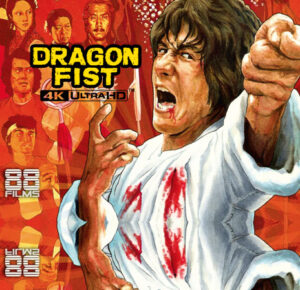






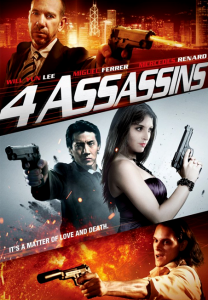
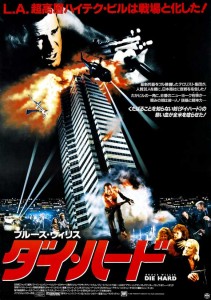

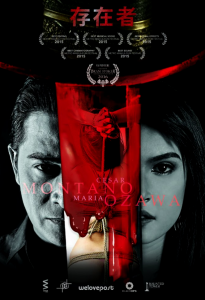
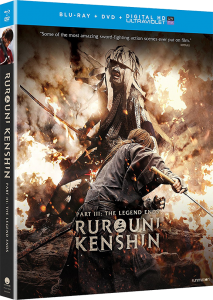


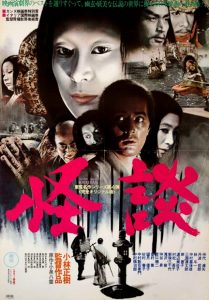
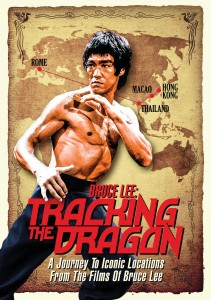

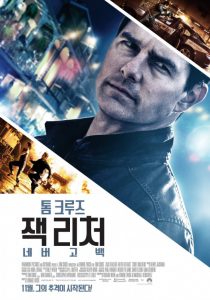
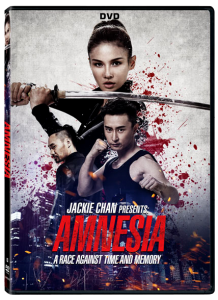
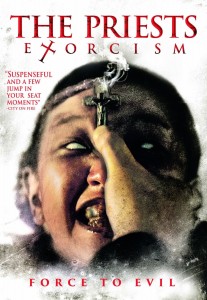
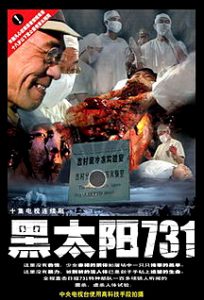



7 Comments